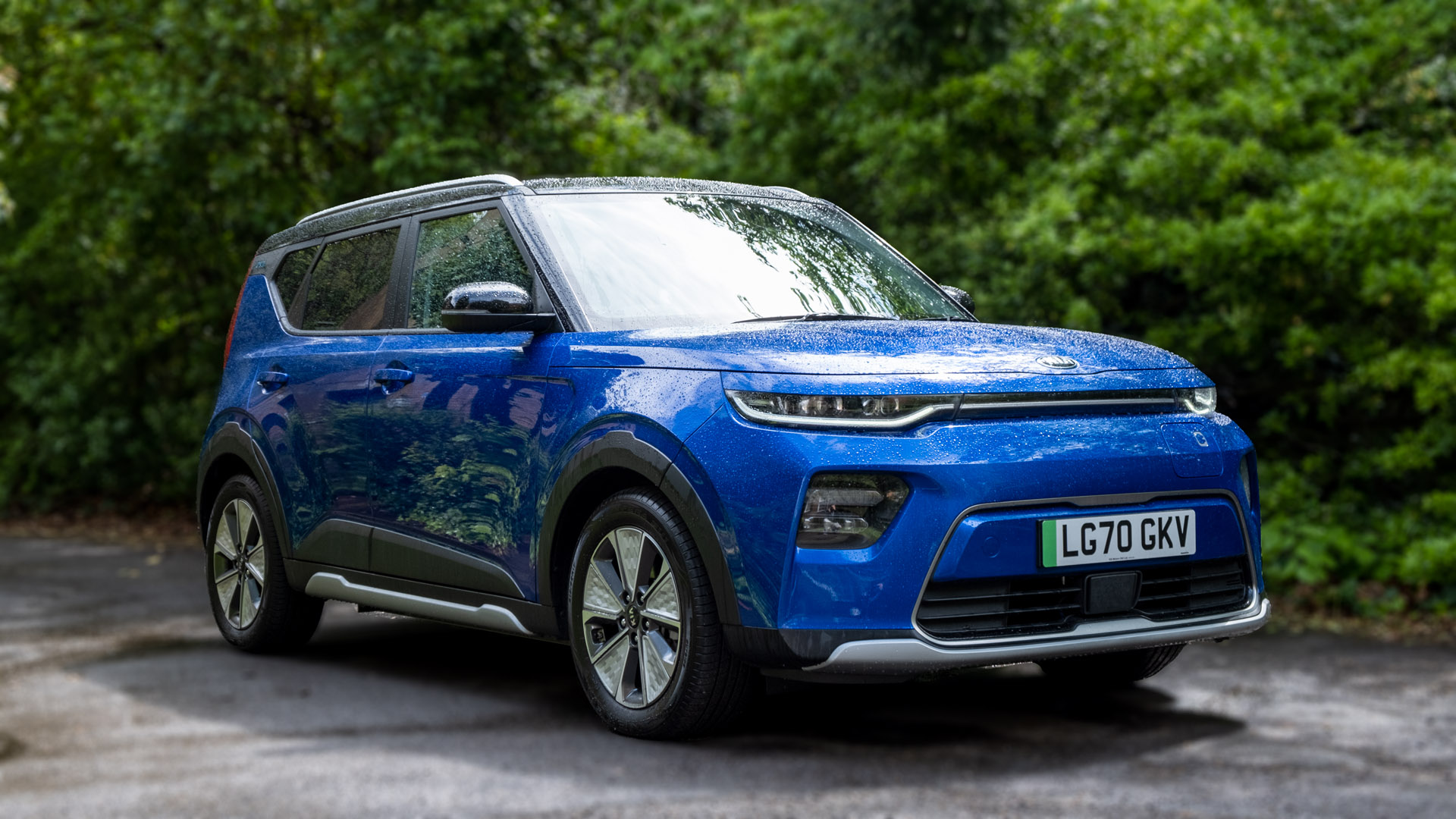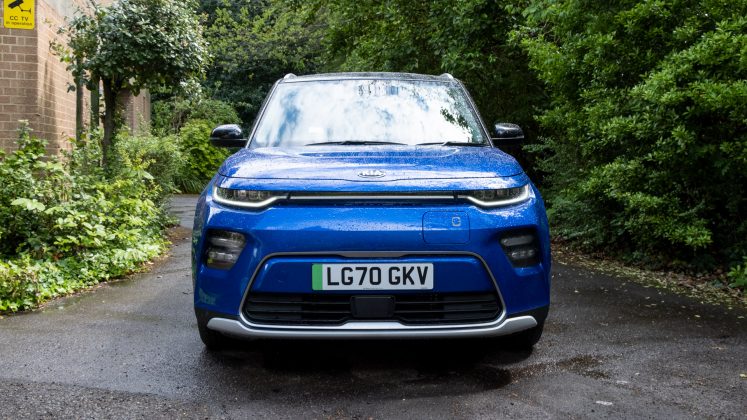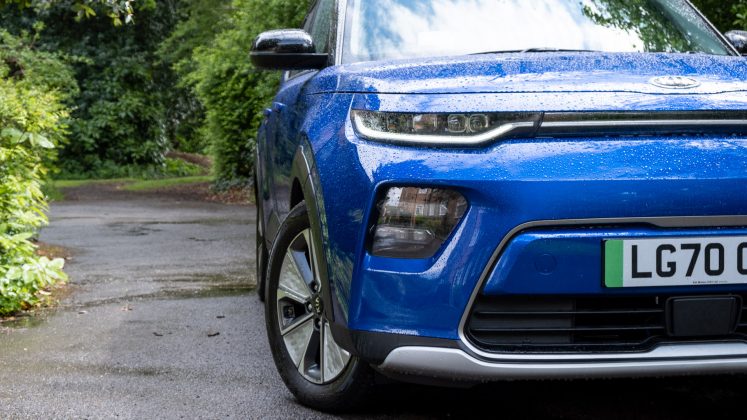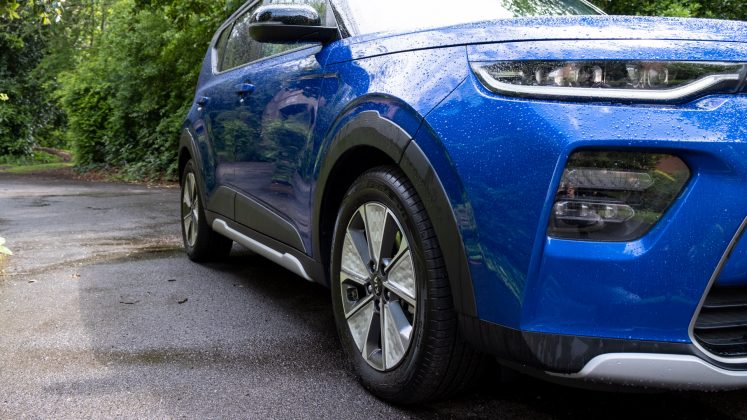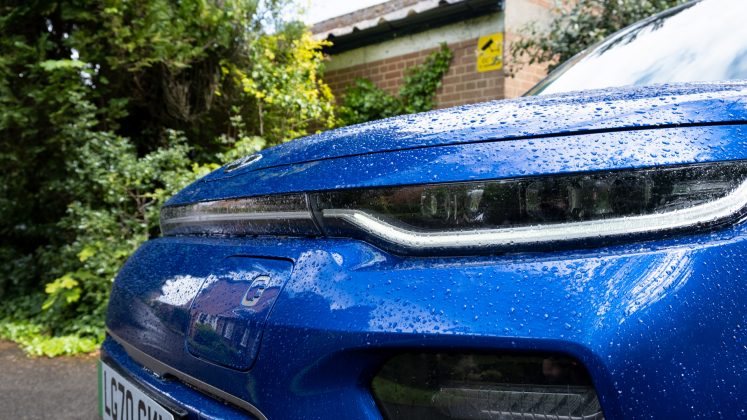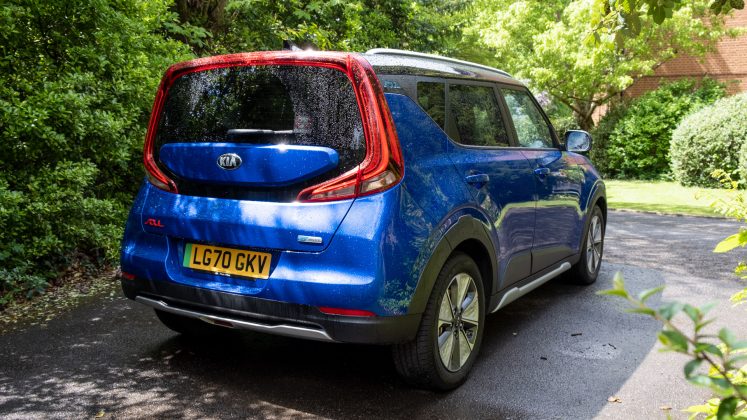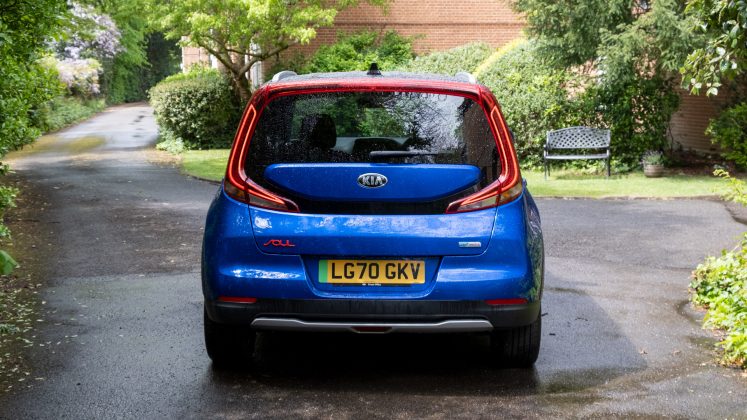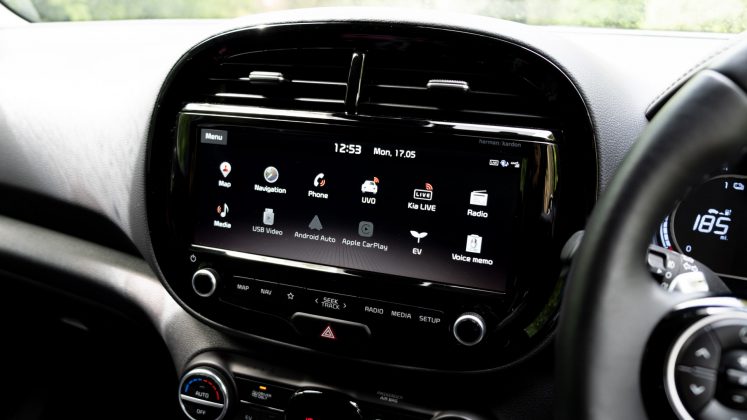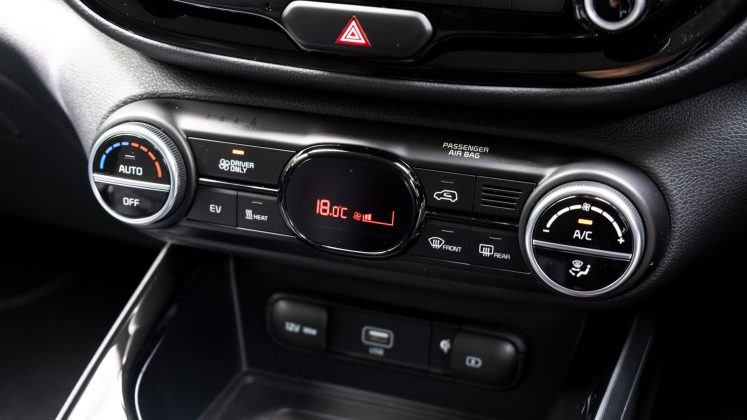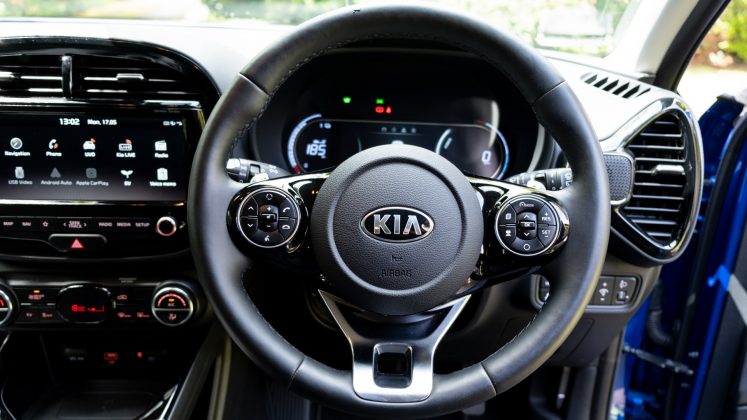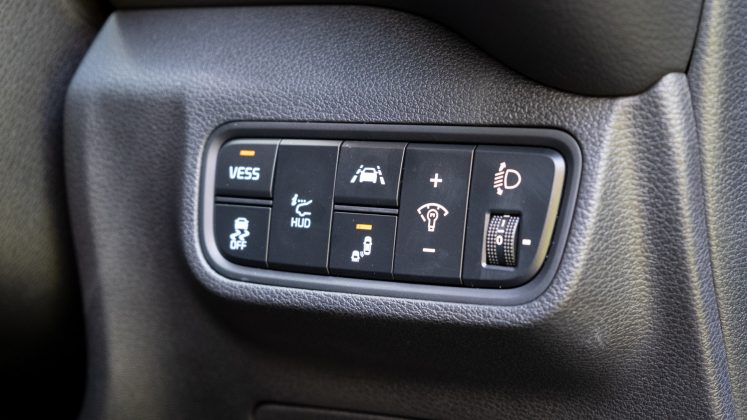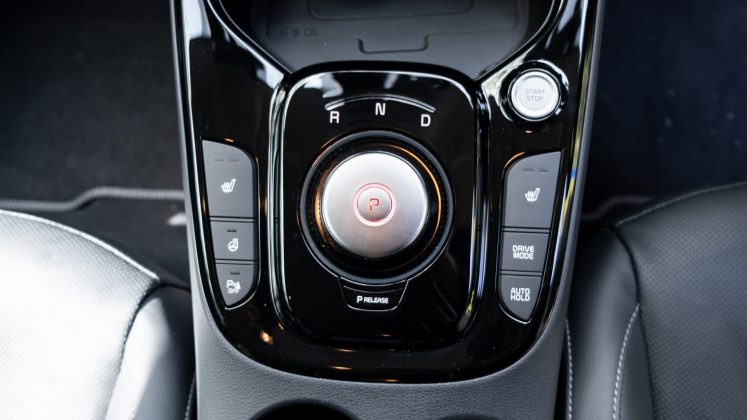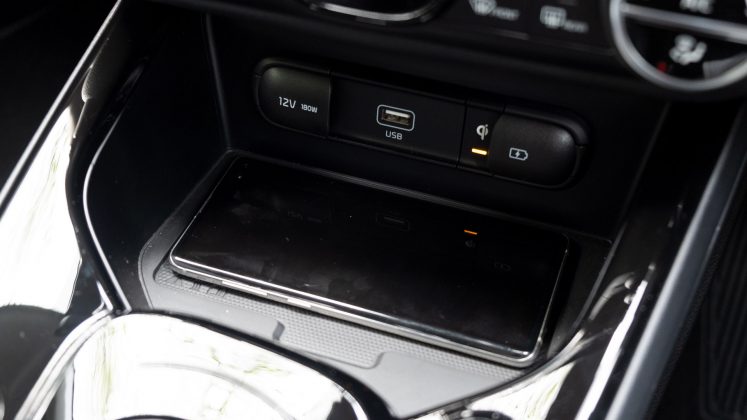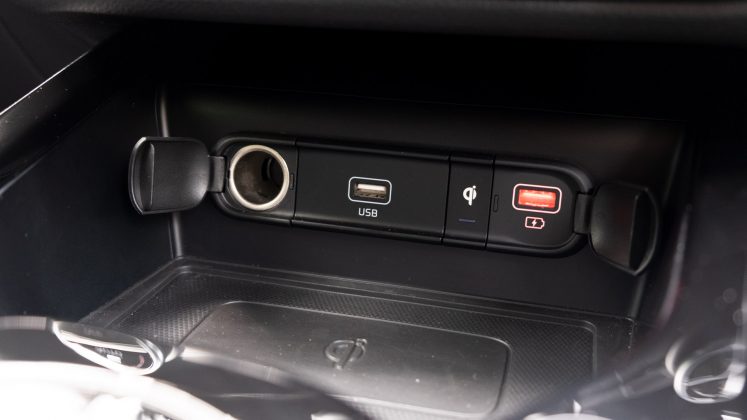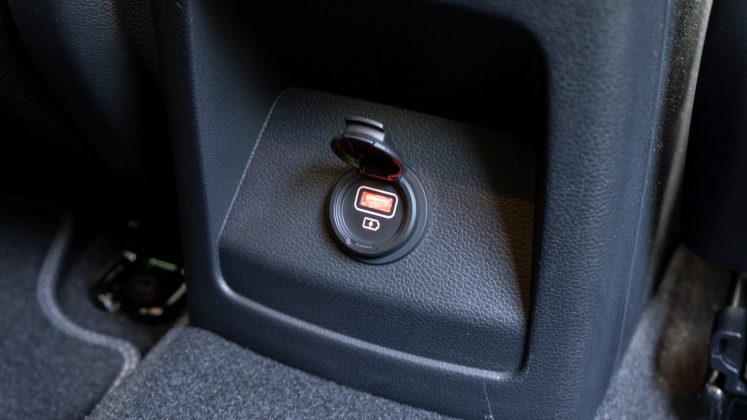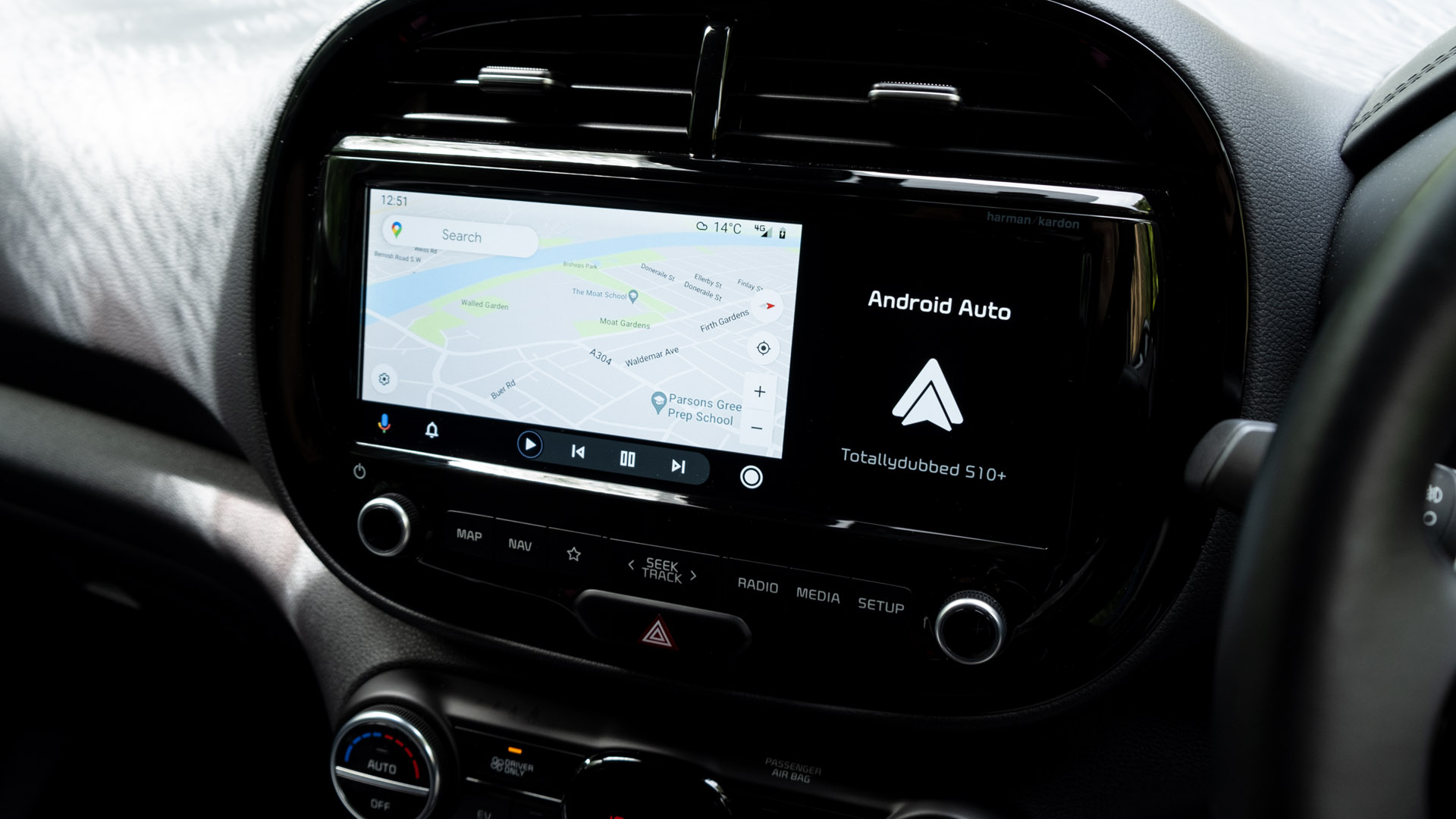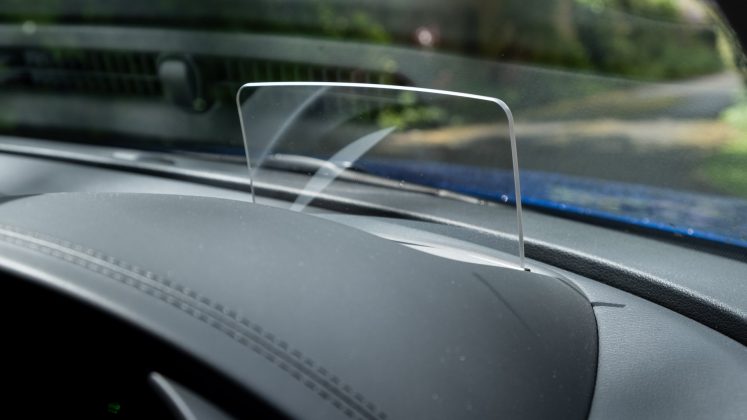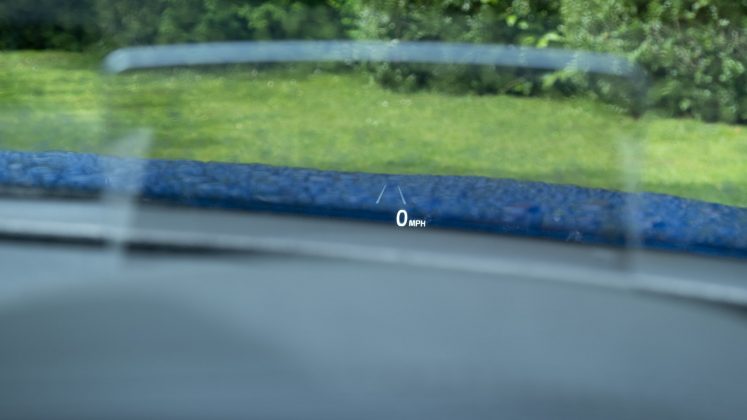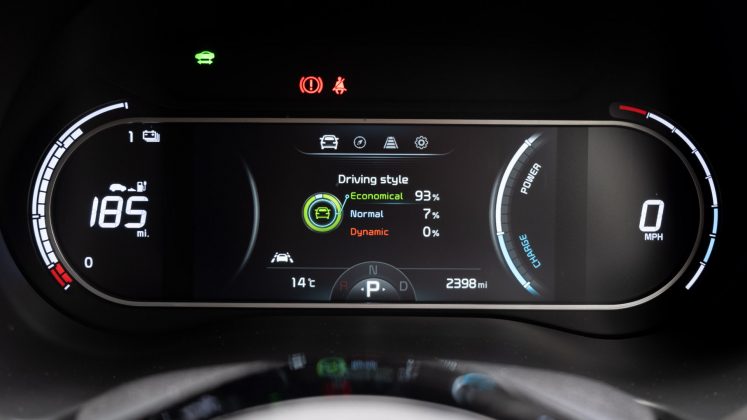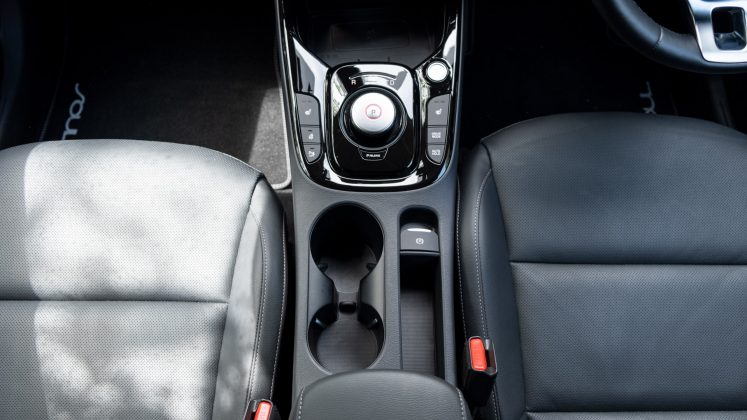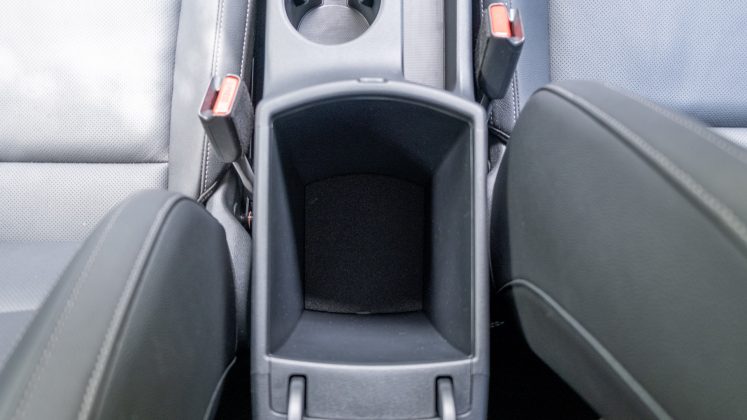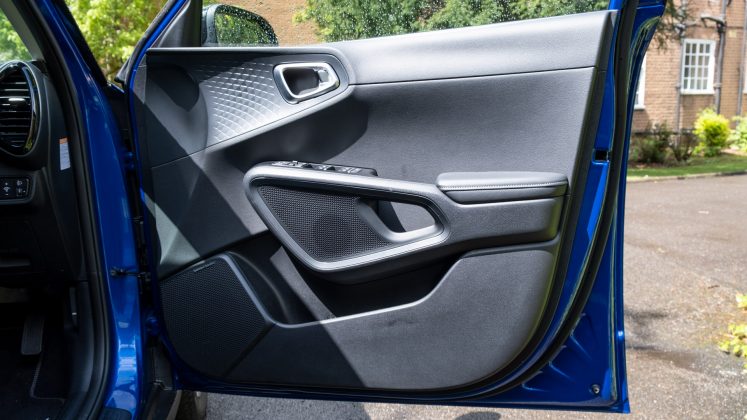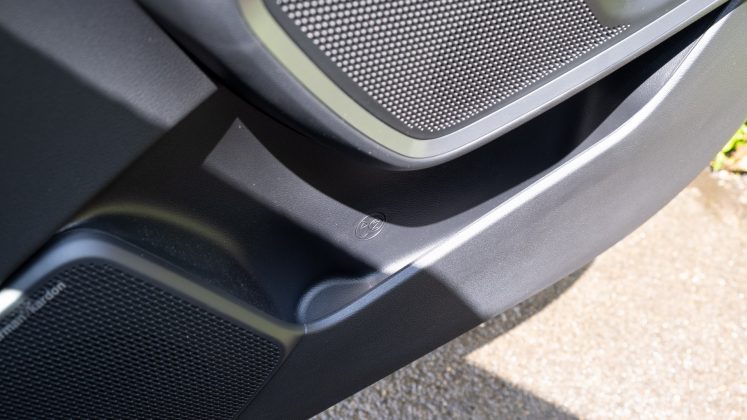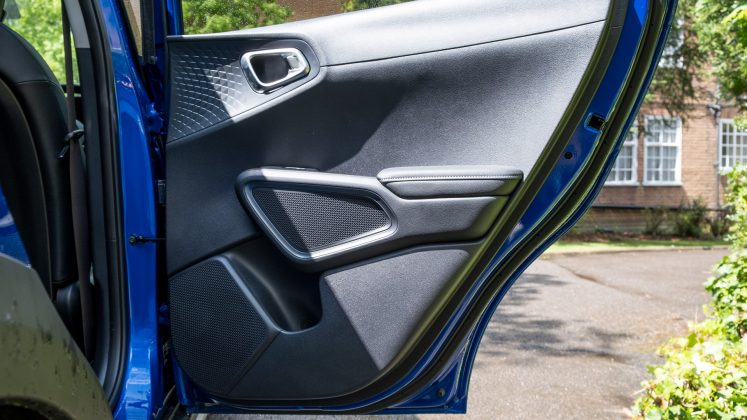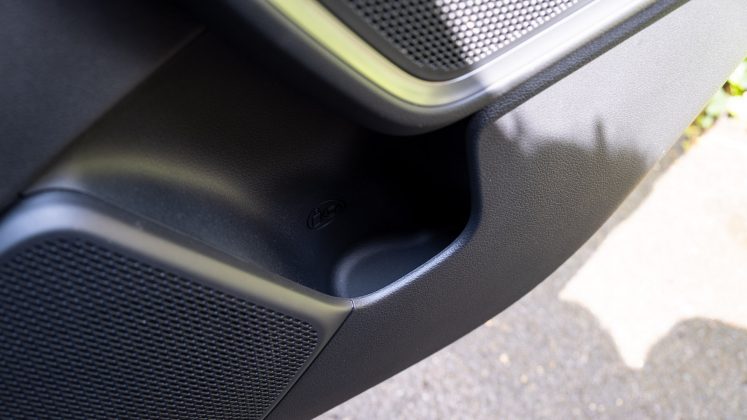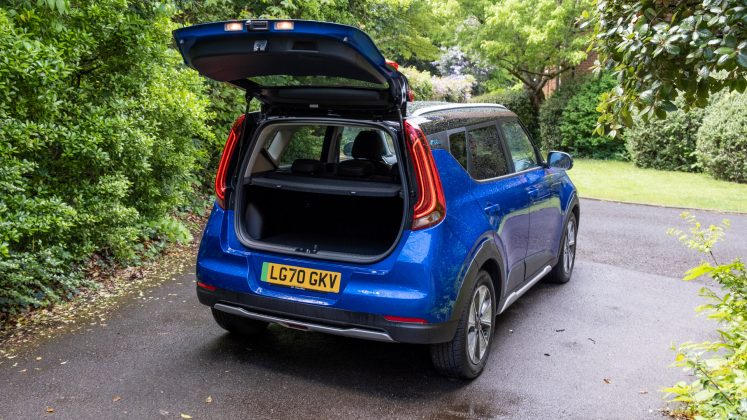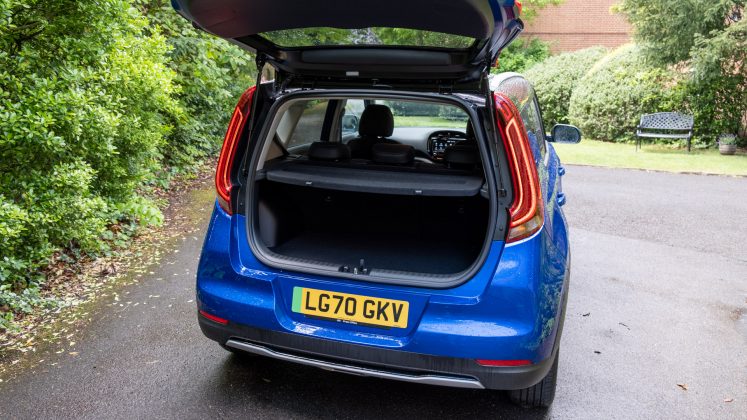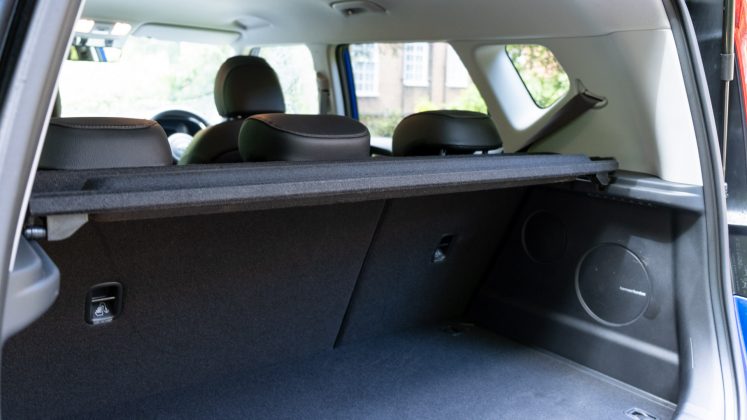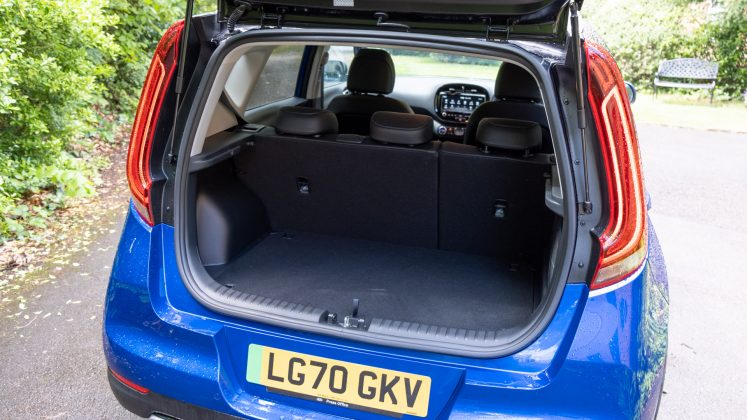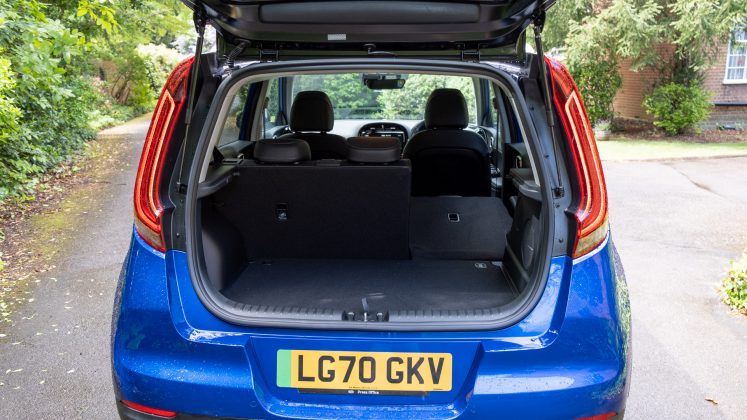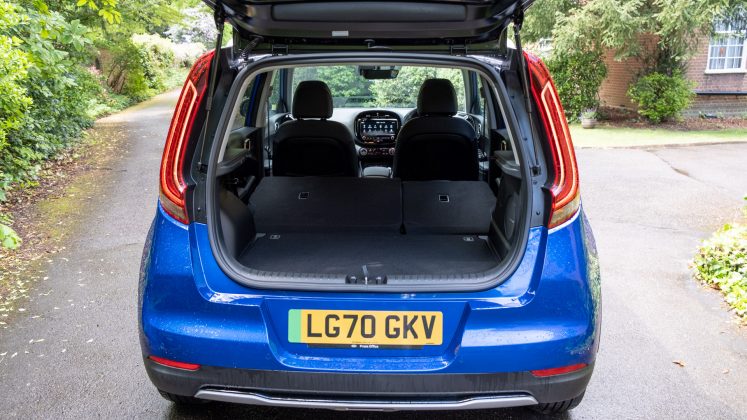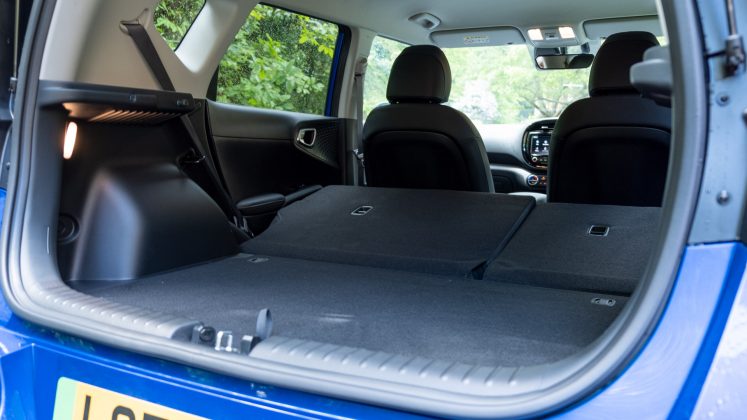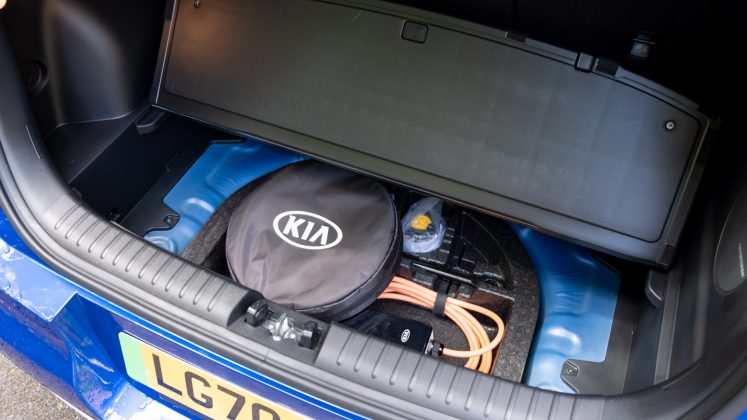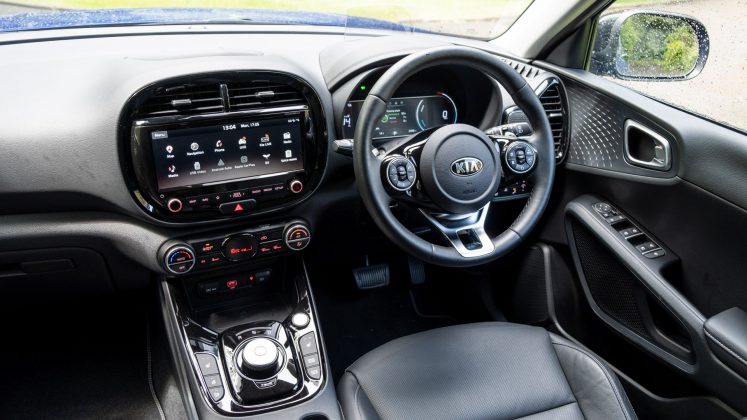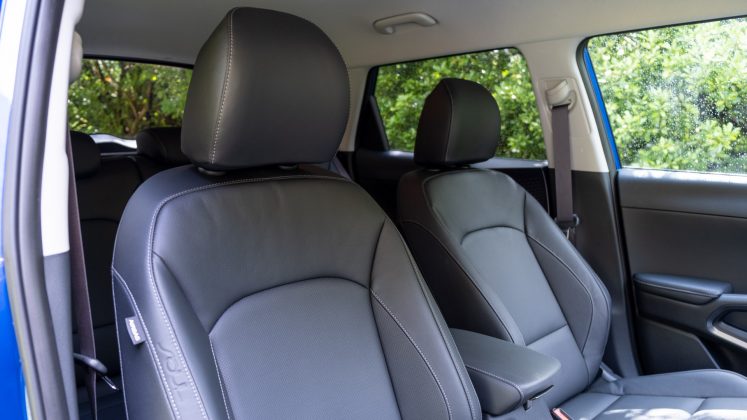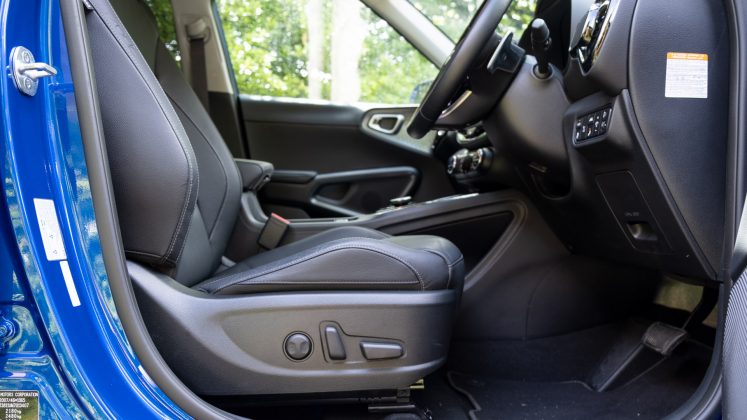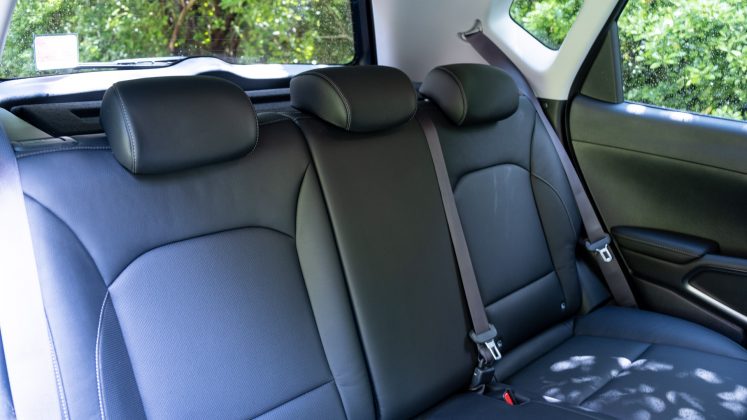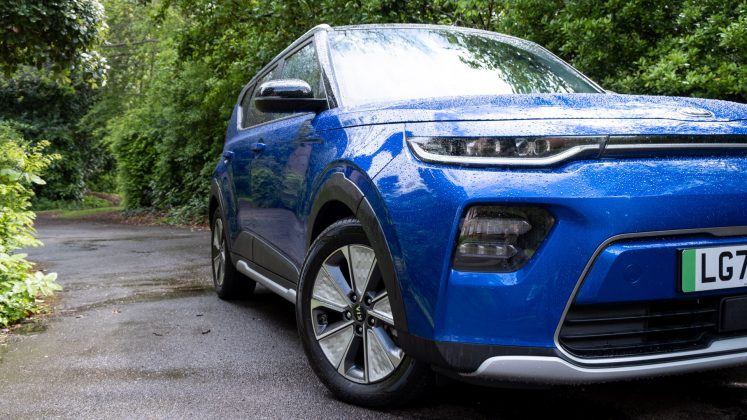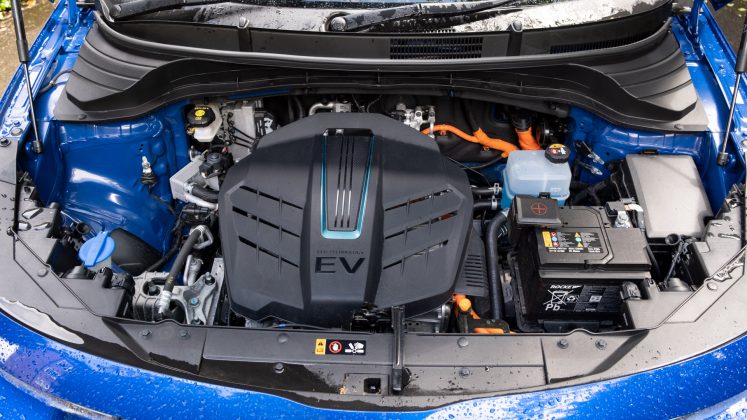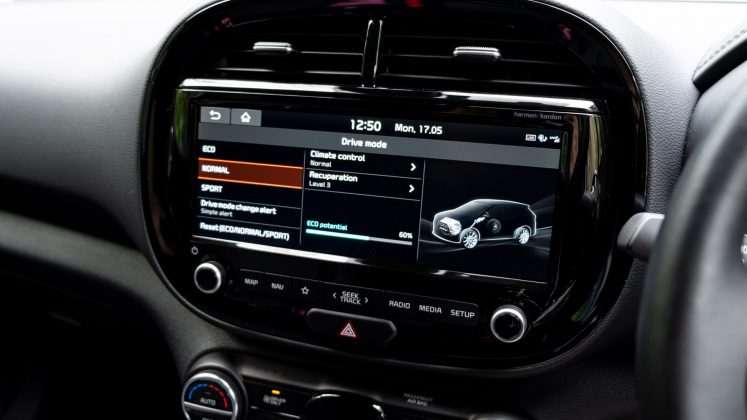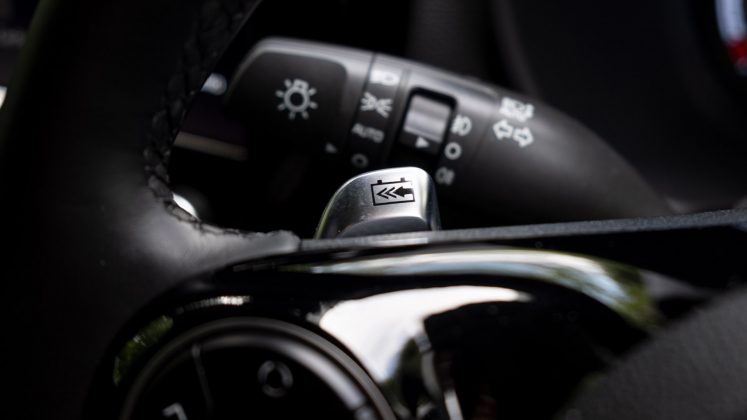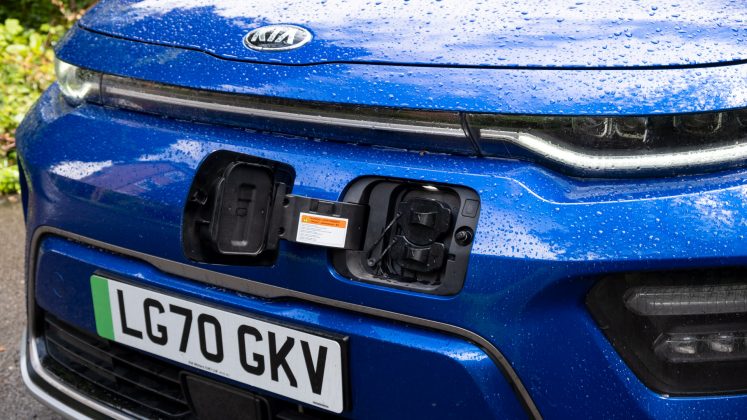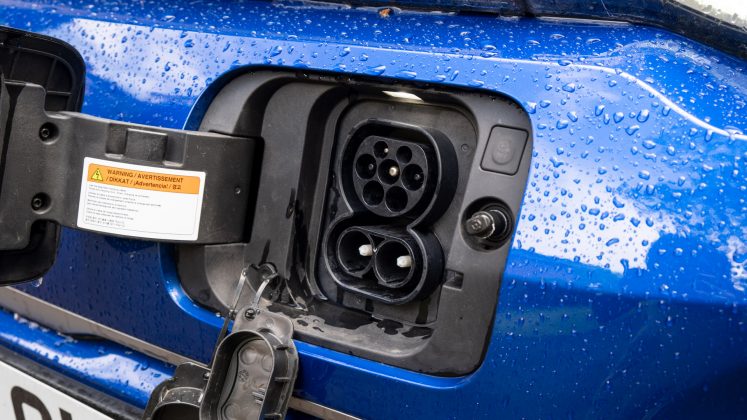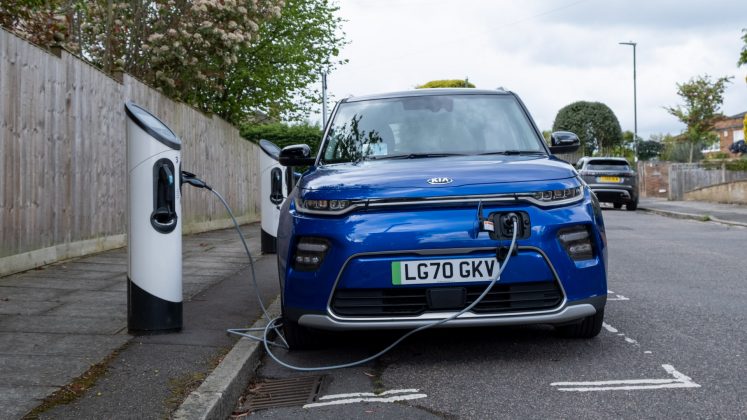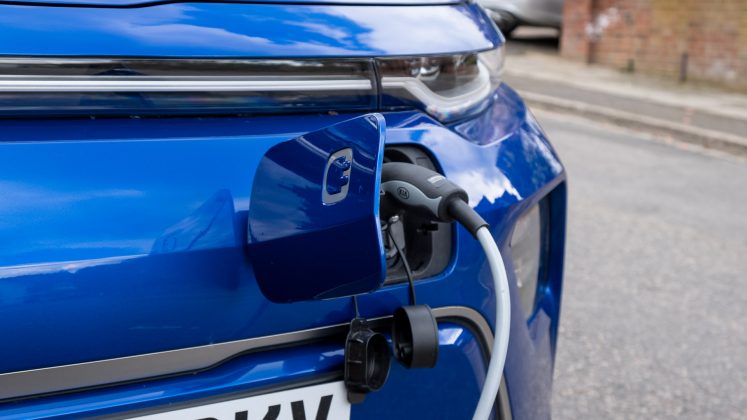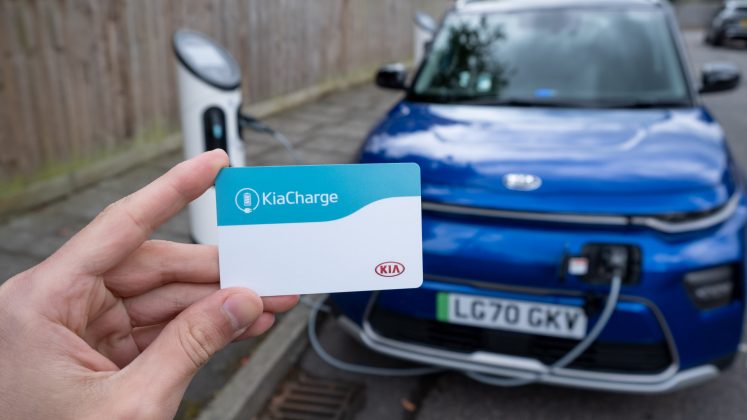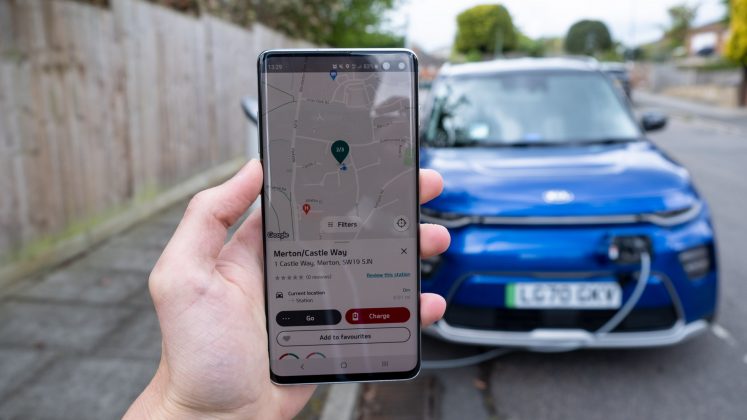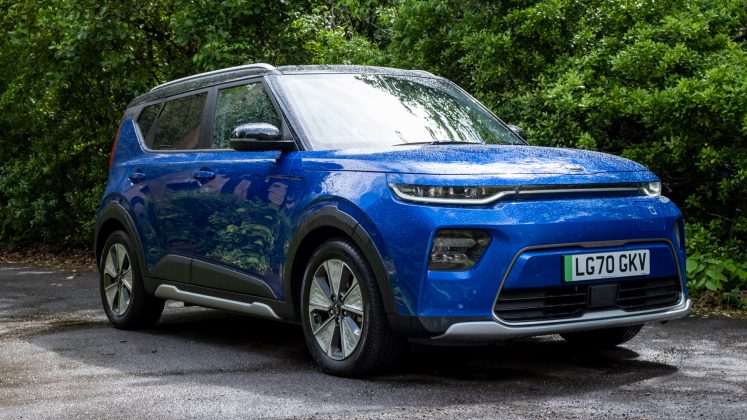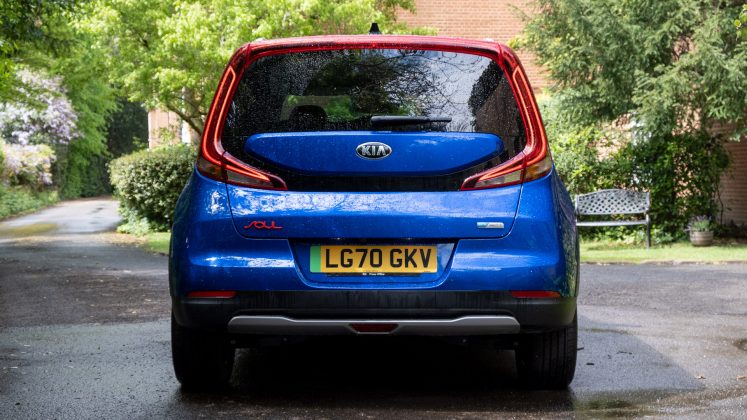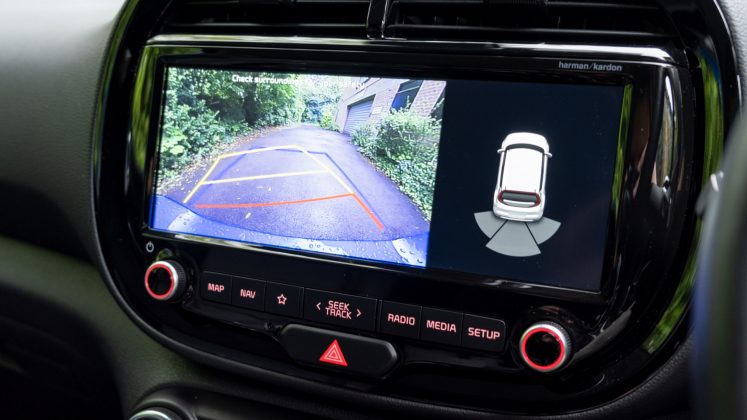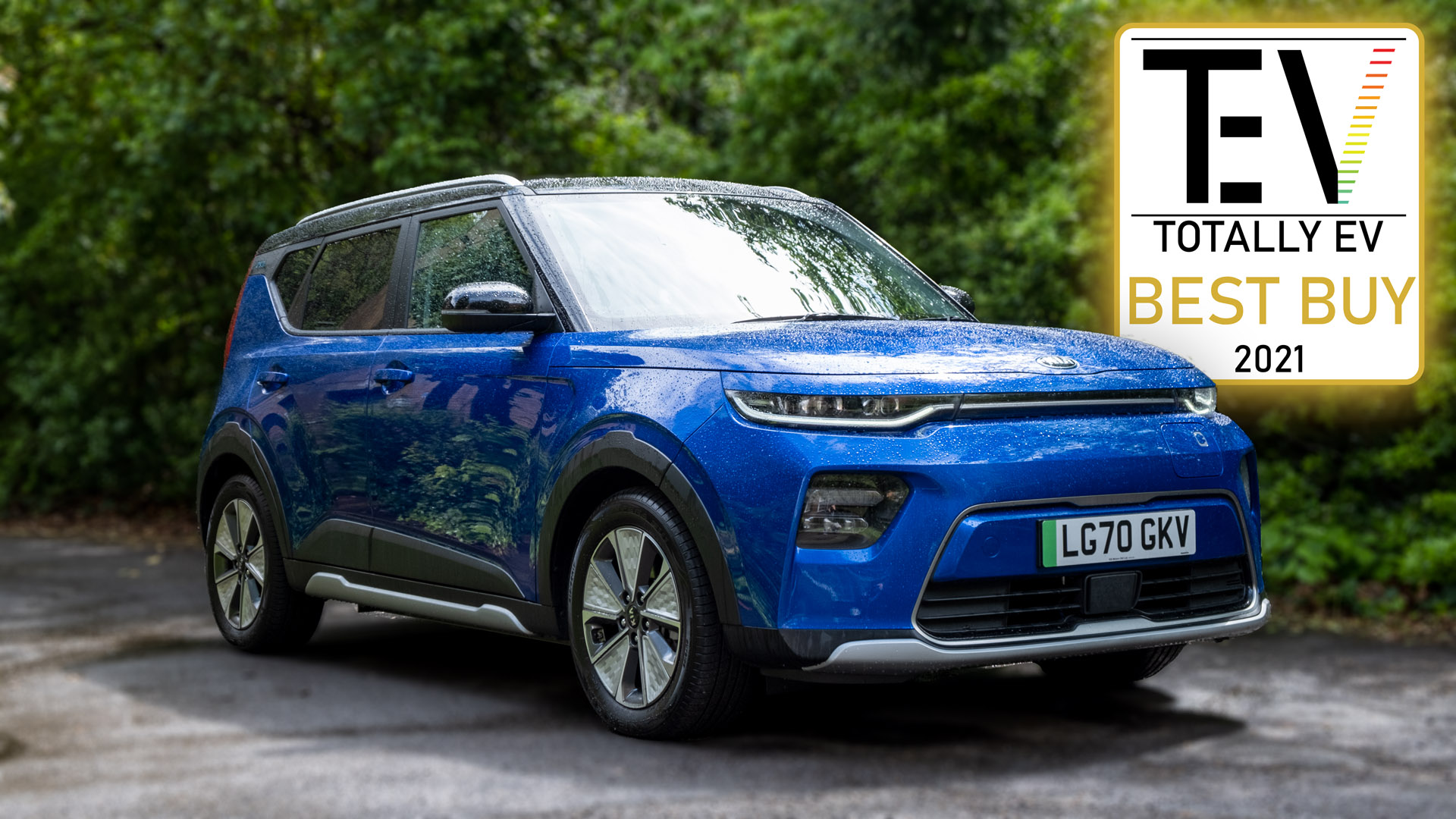The Kia Soul EV, also known as the Kia e-Soul, was introduced in 2014. The second-generation model that’s on review with double the battery capacity over its predecessor, came out five years later.
The funky-looking crossover SUV is, in many ways, similar to the Kia e-Niro and the Hyundai Kona Electric – they all share a 64 kWh battery pack, are feature-rich and are comparatively affordable in comparison to other fully electrified vehicles on the market.
If you’d prefer to watch a review of the Kia Soul EV, head on over to our YouTube channel.
Kia Soul EV price & competition
Indeed, the Kia Soul EV comes in at £32,445 after the government plug-in car grant (PiCG). At the time of writing, it costs the same as the e-Niro ‘2 64’ and the Hyundai Kona Electric Premium 64 kWh variants. However, both these vehicles don’t offer the same plethora of standard features and as a result, if you want a like-for-like Kia e-Niro you’ll have to fork out £39,645 for the e-Niro 4+ or £37,200 for the top-spec Hyundai Kona Electric Ultimate.
Find the best Kia Soul EV deals
Here’s what comes as standard on the Soul EV:
- Single front-mounted electric motor outputs 150 kW (201hp), 395 Nm of torque, and propels the vehicle to 60mph from a standstill in a quoted 7.6 seconds
- Front-wheel-drive system with 17″ alloys and 215/55 tyres
- 64 kWh battery with a heat pump that claims to run for 280 miles on a single charge
- Supports up to 100 kW charging
- Built-in roof rails
- Privacy glass (rear windows and tailgate)
- Full-LED front and rear lights
- Rain-sensing front wipers
- 10.25″ touchscreen infotainment system with Android Auto and Apple CarPlay support
- 7″ OLED instrument cluster
- Head-Up Display (HUD)
- 10-speaker 640 Watt Harman Kardon audio system
- Three USB ports for charging (two front, one rear)
- Qi wireless charging pad for a singular smartphone
- Black leather upholstery
- 8-way driver’s power-adjustable seat with lumbar support
- Heated steering wheel and front seats
- 60:40 split-folding rear seats
- Choice of three colour finishes: Quartz Black with Red Roof; Clear White with Red Roof, and the pictured Neptune Blue with Black Roof
- Driver assistance systems: Reversing camera with rear parking sensors; Adaptive Smart Cruice Control (SCC); Forward Collision-Avoidance Assist (FCA); Lane Keep Assist System (LKAS); Lane Follow Assist (LFA); High Beam Assist (HBA); Blind Spot Detection (BSD) with Rear-Cross Traffic Assist (RCTA); Driver Attention Warning (DAW); Emergency Stop Signalling (ESS)
Buy a car phone mount on Amazon (Affiliate)
It’s quite astonishing that pretty much everything comes as standard, in fact, the only options you can add are decals and external bags for the vehicle’s tyres. Furthermore, all Kia vehicles – including the Soul EV – come with a seven-year warranty (3 years/unlimited mileage and 4-7 years/100,000 miles). There’s even a 12-year anti-perforation warranty that covers corrosion and rusting.
When it comes to its competitors, there are a few all-electric SUVs to consider outside of the Hyundai Group: the MG ZS EV starts from £26,095; the Mazda MX-30 SE-L Lux that costs £26,715 (124 miles WLTP); the Citroen e-C4 (217 miles WLTP) starts from £30,895; the Peugeot e-2008 costs £30,730 (206 miles WLTP); the Volkswagen ID.4 starts from £40,800 (323 miles WLTP).
If you’re looking for something a bit more stylish and want more power there are a few premium all-electric SUVs to consider, too: the Volvo XC40 Recharge Twin at £49,950; the Audi e-tron at £62,025; the Jaguar I-Pace at £65,245; the Mercedes EQC at £65,720; and the Tesla Model X at £98,980.
Elsewhere, you’ve got the MG5 EV, an all-electric estate with a claimed range of 214 miles at £25,095. One should also consider the fun-to-drive VW ID.3, which starts from £29,740 for the Life 58 kWh Pro Performance and the ID.3 Tour 77 kWh Pro S at £38,800.
Read next: Volkswagen ID.3 review: The best electric hatchback?
Kia Soul EV exterior review
From the exterior, the Soul EV certainly looks different from its competitors. To us, it’s reminiscent of the rather fugly-looking Fiat Multipla. That is, however, due to the vehicle’s shape rather than its aesthetics – it has an elongated front bonnet and a cut-off rear boot giving it a wagon-esque look.
At the front, it’s got a progressive design, with stylish LED headlights, a muscular-looking front bumper and a rounded bonnet. From the side, it’s got 17″ alloys, plastic wheel arches and sideskirts and a silver trim finish towards the underfloor of the vehicle. At the top, it has built-in roof rails that are also finished in a silver colour. Around the back, you’ll also find a silver finish at the bottom lip of the bumper and a rather peculiar-looking taillight design that stretches all the way around the top half of the boot. Its exterior design will certainly divide opinion, but it is rather unique from most vehicles on our roads today.
Read next: Kia e-Niro review: The best all-electric SUV?
Kia Soul EV interior review
Moving inside the cabin, however, the Kia Soul EV is very familiar looking. While it won’t compete with the interior design of the Audi e-tron or the Volvo XC40 Recharge Twin, it’s certainly refreshing to see the Korean manufacturer has retained physical buttons and knobs – there’s no capacitative sliders or a touchscreen interface for the climate controls.
Indeed, planted under the centre-weighted display there are physical buttons to tinker around with the infotainment system and a flurry of knobs and buttons just underneath, which are used to adjust the vehicle’s in-cabin temperature. This notion also extends to the steering wheel, where there are conveniently placed buttons for your media and controls for the instrument cluster. Further, towards the driver’s side door, there are buttons to disable VESS (the artificial engine sound that protrudes from the outside of the vehicle), lane keep assistance, blind-spot monitoring and to adjust the headlight level.
By the centre console, there are conveniently-placed buttons to toggle the seat and steering wheel heaters, disable the parking sensors, enable auto-hold, a start/stop button and another button to flick through the different drive modes. There’s also a rotary gear selector, which is quite intuitive once you get your head around the omission of a traditional gear lever.
Read next: The best dash cams to mount inside your vehicle
Aside from buttons, Kia has included a Qi wireless charging pad at the front of the centre console that’ll fit most modern-day smartphones. There’s a 12V charging inlet and two USB Type-A ports, one of which supports fast charging, while the other permits you to connect a smartphone to the infotainment system. Here, both Android Auto and Apple CarPlay are supported and will display information on the 10.25″ display. However, we did find ourselves a little frustrated with Android Auto, as a third of the screen wasn’t utilised – we noted similar behaviour in the Hyundai Kona Electric and the Kia e-Niro.
When it comes to its audio configuration, Kia includes a 10-speaker 640 Watt Harman Kardon system as standard – it’s pretty spectacular for a stock system. If you’d like to hear how it performs, head on over to our YouTube channel for the dedicated audio review.
Elsewhere, the Soul EV has a 7″ OLED instrument cluster display, which shows all the relevant information one might require. Better still, the manufacturer has integrated a pop-out Head-Up Display for the driver. This promotes better safety and makes for a likened driving experience as you won’t need to glance down at the instrument cluster to check your current speed or see the safety systems in use. If you’re not keen on having the display, you can easily disable it via a button found by the driver’s door.
Kia Soul EV storage review
As for storage, the Sia Soul EV has an abundance of areas to store valuables within the cabin. There’s a small compartment for loose change by the driver’s door, a place for the key fob by the centre console, two cupholders and an armrest with a storage area, the glovebox and four door bins, where the front two will manage to transport a 500ml bottle alongside a large-sized purse or wallet.
The boot is large enough too with a capacity of 315 litres, and a total capacity of 1,339 litres with the seats down. Here’s how it compares to its all-electric counterparts: Audi e-tron (660/1,725 litres); VW ID.4 (543/1,575 litres); Kia e-Niro (451/1,405 litres); MG ZS EV (448/1,375 litres); Peugeot e-2008 (434/1,467 litres); Citroen e-C4 (380/1,250 litres); Mazda MX-30 (341/1,146 litres); Hyundai Kona Electric (332/1,114 litres). As for the MG5 EV estate, it offers 464/1,456 litres. The VW ID.3 offers 385/1,267 litres.
While it’s not as large as its sibling, the Kia e-Niro, it does surpass the Kona Electric when the seats are folded down. Better still, you have a flat loading bay, a 60:40 split-folding rear seats and an underfloor compartment to stow away your charging cables or the boot cover. The only thing missing is an electronically operated boot, a ski latch and the ability to prop down the rear middle seat in case your rear occupants want to use it as an armrest.
Read next: MG ZS EV review: An affordable all-electric SUV
Kia Soul EV comfort review
Nevertheless, the Soul EV is still comfortable for both front and rear passengers. It’s particularly impressive at the rear of the cabin, namely when pitted against other crossover SUVs or hatchbacks on the market. Here, you have a lot of headroom and legroom – we’d go as far as saying that 6-foot 7-inches (200cm) individuals will fit with ease and won’t feel henned in either. The seating position is also natural, where unlike some of its rivals, the Kia doesn’t have diagonally wedged rear seats or heightened front seats.
In terms of adjustments, the front passenger seat is manually adjustable, while the driver’s seat has an electronically adjustable eight-way control with lumbar support. The front seats are heated and the steering wheel is too.
Our biggest complaint when it comes to comfort is cabin noise. While the Soul EV has seemingly good insulation – as there’s minimal noise that creeps into the cabin when you’re at a standstill, it does, unfortunately, suffer from a substantial amount of road noise. It can be heard when traversing at lower speeds and ramps up quite significantly when on the motorway. By comparison, both the Kia e-Niro and the Hyundai Kona Electric do a far better job in providing a quieter cabin; still, none of the Hyundai-Kia vehicles can compete with the likes of the Volvo XC40 Recharge Twin or the Audi e-tron, which reign supreme in this department.
Read next: MG5 EV review: The affordable fully electric estate
Kia Soul EV performance review
Likewise, when it comes to its suspension setup it’s not as adaptive as the likes of more premium SUVs. Here, the Soul EV suffers from body roll when driven at speed around corners, while the front-wheel-drive system also creates wheelspin when the vehicle is launched from a standstill. On the plus side, the softer suspension setup does yield a pleasant experience when driving around the city – speed bumps and potholes aren’t an issue, where one can easily glide over them. The same couldn’t be said about the MG ZS EV, which has a more stiffened setup and results in a less comfortable experience when pottering around town.
When it comes to performance, the Soul EV has a front-mounted motor that outputs 150 kW (201hp) of power and dispatches 395 Nm of torque. Using Racelogic’s Vbox Sport, we had it tested from 0-60mph in seven seconds. An impressive feat for a vehicle of its size and one that has a kerb weight of 1,757 kg. As for top speed, it’s limited to 104mph, which is a touch disappointing for those who frequent unrestricted roads – still, it’s not overly surprising as other electric vehicles in its class are also limited to a similar speed.
Find the best Kia Soul EV deals
While it’s not overly fast, it does excel in its electric driving range. Here, we netted around 250 miles in our mixed driving tests, making it comparable to the Hyundai Kona Electric, the Kia e-Niro, the VW ID.4 and the Volvo XC40 Recharge Twin, which all achieved a similar figure. One could even achieve the manufacturer’s 280-mile claim or above, if driven conservatively in Eco+ mode with the climate controls disabled and when driven around the city. However, we like to drive in Normal mode with the in-cabin climate set to around 19-20°C, the infotainment system in operation and like to put our cars to the test on city, motorway and country roads.
Its impressive result is, in part, due to its large 64 kWh battery pack and the inclusion of a heat pump. The latter feeds hot air that’s generated by the battery cells back into the climate system, which ultimately improves the vehicle’s efficiency.
However, much like the other Hyundai-Kia EVs, the lack of a one-pedal driving option is frustrating. Despite three levels of regenerative braking to choose from via the infotainment system one can’t drive without having to press on the brake pedal. On the plus side, you can customise the regenerative braking level per driving mode (Normal, Sport, Eco) and have it default to whichever mode you prefer upon setting foot inside the cabin. In some fully electric vehicles, you have to set the regenerative braking level each time you start a new journey. Thankfully, that’s not the case with the Soul EV and you can even adjust it on the fly via the use of the flappy paddles found behind the steering wheel.
In order to recharge the battery pack, there’s a CCS and Type 2 port found at the front of the vehicle. The former allows a 100 kW input, allowing you to go from 0-80% in 54 minutes. Opt for a 50 kW input instead and it’ll take 1hr 15mins. The latter port will take you from 0-100% in 9hrs 35mins and via a 3-pin charger will take a whopping 31 hours.
To make things a bit simpler for those transitioning to EVs for the first time, the manufacturer offers ‘KiaCharge’. It’s a service that allows you to use a quarter of a million charge points via one contactless card. There are two different tariffs to choose from: Easy and Plus, where the latter provides a 15% discount, doesn’t incur a session fee but does cost £2.99 a month.
In our case, we primarily use Source London’s infrastructure to charge our vehicles, and in this case, the KiaCharge service means we’d be paying more per kilowatt-hour versus using our Flexi Source London membership. Ultimately, it’s not for those who have separate and cheaper subscriptions via other providers but is a great alternative to having to sign up to unknown providers when you’re on the go.
Read next: Tesla Model 3 review (2021 facelift): Should you buy into the hype?
Kia Soul EV safety review
What will make your life even easier, however, is the amount of driver assistance systems that come as standard. Kia has pulled out all the stops in this department and it’s certainly appreciated. We already referenced the inclusion of its Head-Up Display, but there’s even more than meets the eye, as visibility around the cabin is excellent – large windscreen, side and rear windows alongside a rearview camera and sensors make it a breeze to park.
On the road, a plethora of systems really bolsters the overall driving experience. Here, you’ll find the following: Adaptive Smart Cruice Control (SCC); Forward Collision-Avoidance Assist (FCA); Lane Keep Assist System (LKAS); Lane Follow Assist (LFA); High Beam Assist (HBA); Blind Spot Detection (BSD) with Rear-Cross Traffic Assist (RCTA); Driver Attention Warning (DAW); Emergency Stop Signalling (ESS).
Indeed, it’s great to see a full set of driver assistance systems in operation, most of which can be disabled if not required. BSD works particularly well on the motorway and will give you an audio cue when moving into a lane that’s occupied by another motorist. As for SCC, it’s excellent and even provides a stop/go function allowing for a more relaxed experience on mundane trips. Note, unlike the Tesla Autopilot system, you will need to reinitiate the system when you come to a complete standstill by gently pressing on the accelerator pedal.
Read next: Hyundai Kona Electric review: Kia e-Niro alternative?
TotallyEV’s verdict on the Kia Soul EV
Overall, the Kia Soul EV is a feature-packed electric vehicle that’ll go the distance and keep you entertained. Its exterior design won’t appeal to everyone but it’ll grow on you, especially once you realise how much bang for your buck you’re getting in comparison to other vehicles on the market.
Find the best Kia Soul EV deals
We’d go as far as saying it’s the best value electric vehicle money can buy, surpassing the likes of the Kia e-Niro and Hyundai Kona Electric. As a result, the Soul EV receives TotallyEV’s Best Buy award.
Could you see yourself driving the Kia Soul EV? Let us know in the comments section below or via social media; we’re on: YouTube, Instagram, Facebook, Twitter and LinkedIn.

